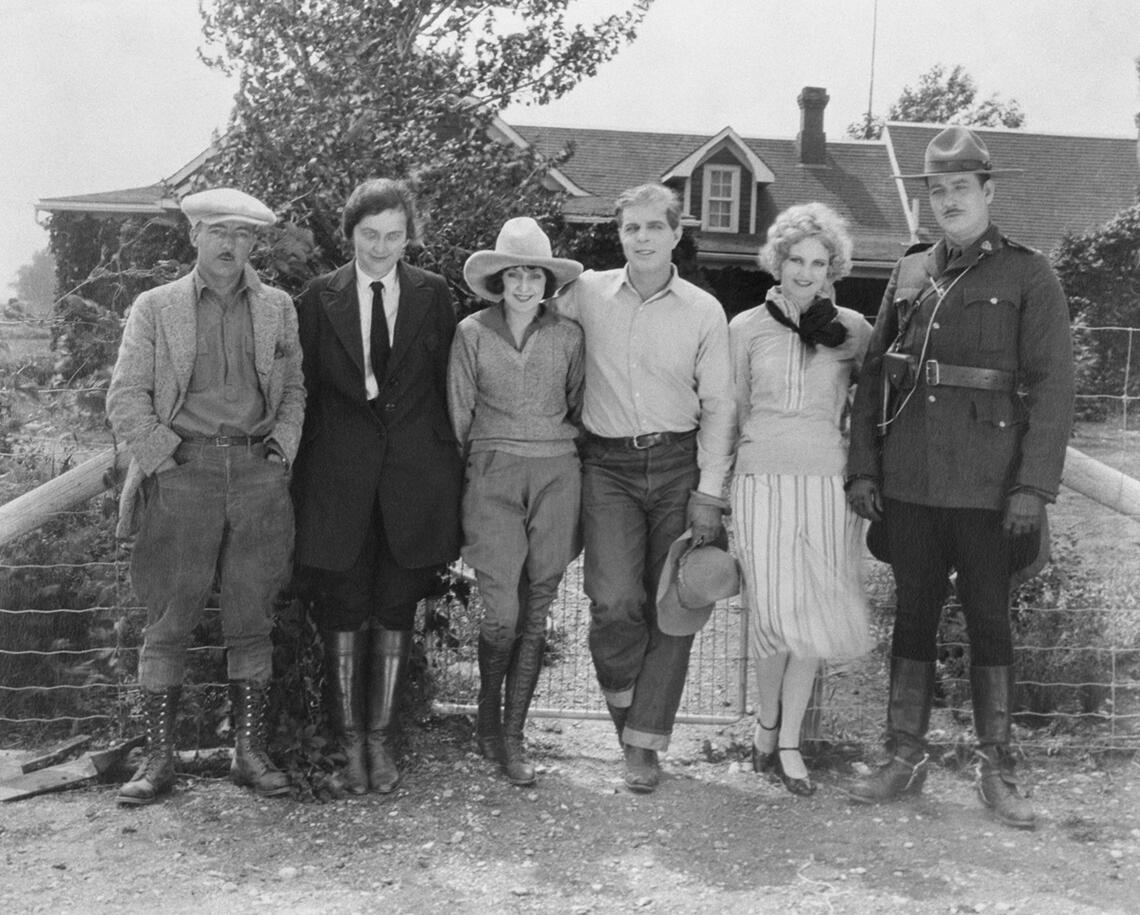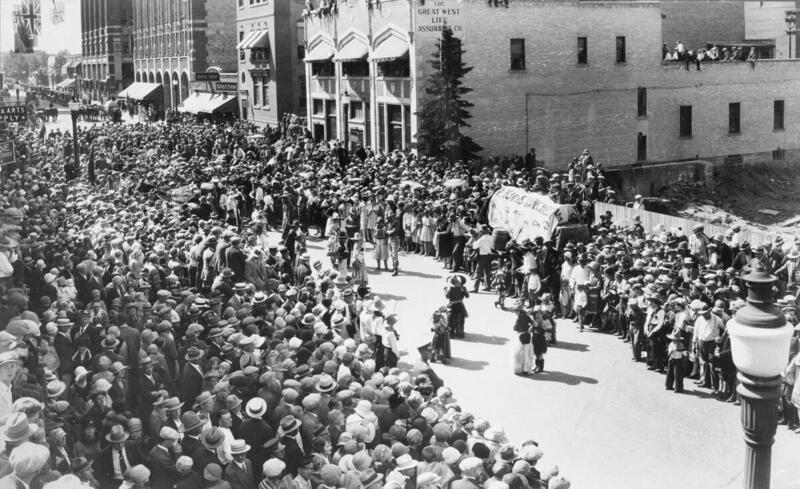June 20, 2023
The surprising story behind the 1925 cowboy movie, The Calgary Stampede

It wasn’t too long ago that The Last of Us was a hot topic of conversation around the proverbial water cooler. Everyone, it seemed, was taken with the plot, the characters, or naming the Calgary sites they recognized on screen.
Albertans are used to seeing places they know on the big screen. The spectacular beauty of the Canadian Rockies has served as a stunning backdrop for the film industry for more than a hundred years. Calgary author Mary Graham details the first half of that history in her book, A Stunning Backdrop: Alberta in the Movies, 1917-1960, published by the University of Calgary Press (Bighorn Books).

“Hoot Gibson and party at EP Ranch, Pekisko, Alberta., 1925,”(CU175607) by Unknown.
Glenbow Library and Archives Collection, Libraries and Cultural Resources Digital Collections, University of Calgary
One of the movies featured in Graham’s book is The Calgary Stampede, filmed in 1925 and starring Hoot Gibson and Virginia Brown Faire. As the title suggests, the movie is connected to “The Greatest Outdoor Show on Earth.” One of the biggest rodeos on the North American circuit, it caught screenwriter Raymond Schrock’s attention and gave him an idea for a screenplay. He imagined a film with a down-on-his-luck champion Roman rider on the rodeo circuit and the daughter of the local warden as his love interest, set against the backdrop of The Calgary Stampede.
He pitched the screenplay to his superiors at Universal Pictures, who loved the idea and signed an exclusive contract to buy the picture and shoot it in Alberta. Hoot Gibson would play the lovable Dan Malloy, and Virginia Brown Faire the warden’s daughter.
On June 17, 1925, Gibson arrived by train in Calgary with his horse Silver and an entourage of 40 people. It was one of the most expensive and elaborate location pilgrimages undertaken by a studio in recent years. Cameramen captured the Stampede festivities including the parade, square dancing and roping games, the grandstand and rodeo holding areas. Director Herbert Blaché rigged up a covered wagon with a hidden camera and moved about the city, filming surreptitiously to create an unaffected ambience.

A Calgary Stampede downtown street dance on Seventh Avenue between First Street SW and Centre Street, during the filming of The Calgary Stampede in 1925. Reeves and Young. Glenbow Archives, n12365-45.
Libraries and Cultural Resources Digital Collections, University of Calgary, Calgary, Alberta
In her book, Graham says despite growing societal racism, easy and familiar relationships often existed between First Nations and some of Alberta’s early pioneers in Banff and Calgary, rodeo competitors and the visiting movie stars and directors. When the great chiefs of the Siksika Nation heard Hoot Gibson would be filming a movie in Calgary, they contacted Guy Weadick (founder of The Calgary Stampede) and requested an opportunity to honour Hoot Gibson for making what they saw as an historically correct movie. The chiefs named Gibson “Chief Petaooast” and presented him with a spectacular horse at the closing ceremonies.
Graham says she sought help in writing the book from the Stoney Nakoda to recapture their involvement in filmmaking over the last century and piece together a more inclusive history. She collaborated with the Stoney Nakoda on multiple projects to record their perspectives and experiences and identify filming locations on their reserve at Morley and their unceded, pre-Treaty lands at Kootenay Plains.







